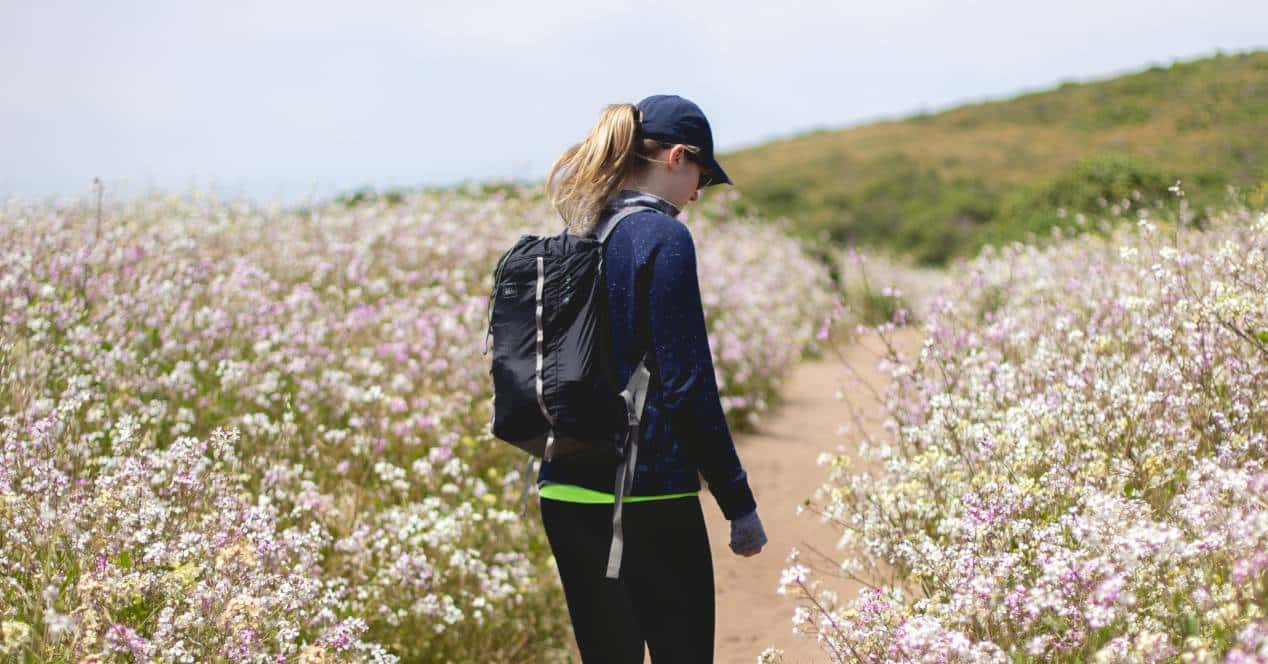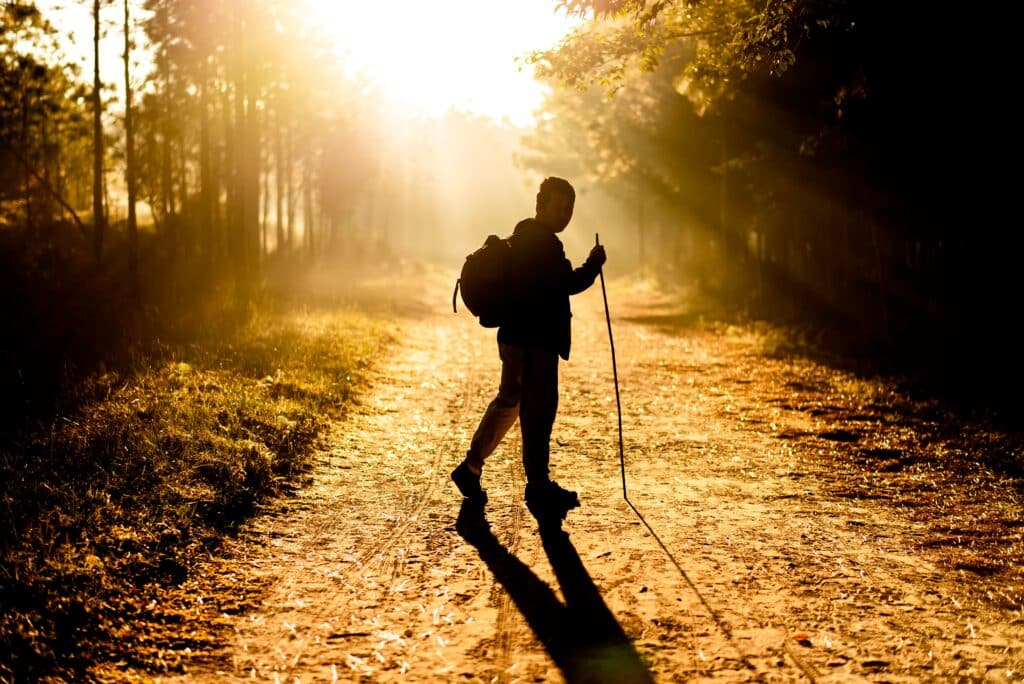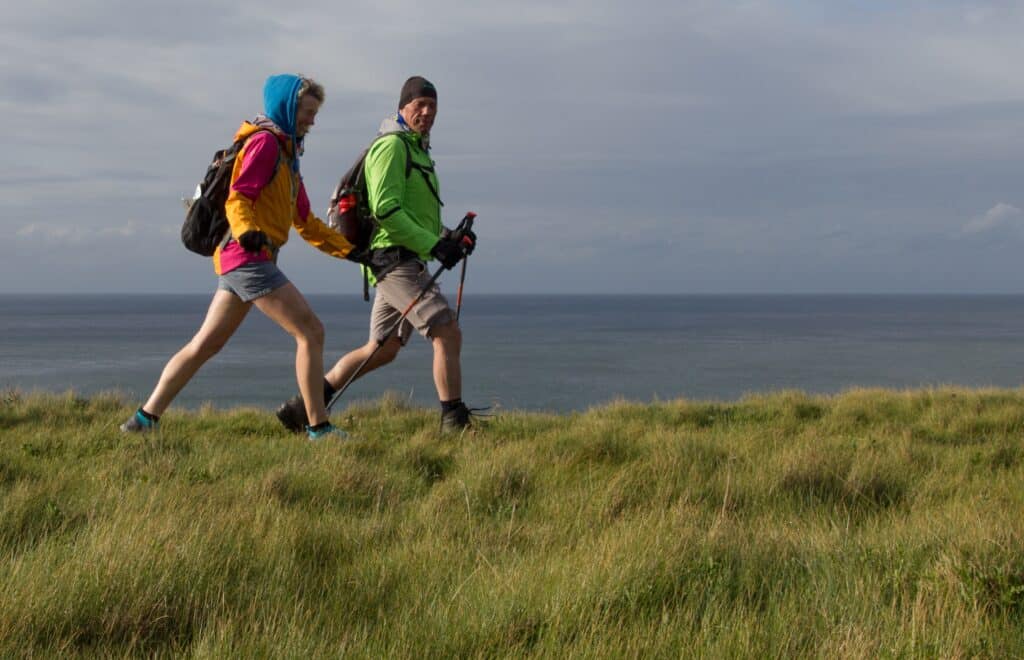
Rucking is a little extended practice, but it provides numerous health benefits. We will only have to use a backpack (also known as a ruck) with some weight to go for a walk.
The practice of rucking has its roots in the army, where soldiers would carry their backpack with the equipment and carry it to their next destination. In this case, it is not necessary to be or have been in the military to start rucking. It really is an activity for everyone, and it has become a more common way to improve fitness through cardio and resistance training. Plus, the ease of getting started and the minimal equipment required make rucking a great workout.
Can you gain muscle by walking with weights?
As with any physical activity, the impact will be relative to the physical level of each person. An out-of-condition person who has just started rucking will likely see much greater muscle gain compared to a very active athlete who works out 3-5 days a week.
The weight of our backpack and the distance traveled are also important. Although a person should walk easy and increase the distance and load over time, in general, walking with more weight and more distance will produce better results. Rucking undeniably builds muscle. The extra weight carried while walking builds muscles and strengthens the legs, core, shoulders, and back.
- Legs: In general, the legs have adapted to support body weight. By adding additional weight to the body, via a backpack, we are increasing the amount of resistance that the legs must withstand over time. This continuous resistance will produce muscular hypertrophy, strengthening the legs.
- Core: by adding additional load to the back, the involvement of the muscles in the core will increase to stabilize the load and protect it. Although the load must be secure, the body will notice an increase in weight and movement of the ruck as we walk. To compensate and keep us upright, the abdomen will naturally engage in a greater capacity than when we walk with just our body weight.
- shoulders and back: the additional weight of the backpack will be distributed between the shoulders and the back. As we walk, the increased load will cause the shoulders and back to engage at a higher rate than normal, causing the muscle to respond to the increased weight. Over time, this will build your shoulder and back muscles.

Advantages of practicing Rucking
Now that we know, it's time to talk about the health benefits it has. Although rucking may seem easy while doing it, we shouldn't be fooled. Taking a walk with a weighted backpack brings many benefits for the body and mind.
It is less stressful on the body than running
A big difference between rucking and running, aside from the added weight, is that one foot always touches the ground, just like when walking. The same does not happen in the case of running.
When running, there is a moment when both feet are off the ground and a moment when you hit the ground, sending pressure through the legs that are absorbed by the knees. When rucking, like walking, one foot is always in contact with the ground as we shift our weight forward. This subtle difference puts less impact on the knees when rucking and the right shoe can further reduce the level of impact.
It's good for the heart
Rucking increases the body's need for oxygen and energy to carry the load over distance. Routinely making the body need this amount of oxygen and energy will result in increased cardiovascular endurance over time.
A weighted backpack raises your heart rate compared to regular walking, therefore it counts as cardio and has an effect on your heart that is comparable to jogging. Rucking also improves overall work capacity and stamina. Gaining the ability to cover ground under load builds a solid foundation of fitness.
Burns almost as many calories as running
This type of physical activity is a great outdoor cardio workout if you hate running but still want to burn off the calories that running brings.
In fact, we can burn just as many calories jogging as jogging. Research shows that it can burn 40-50% more calories than walking without added weight. Another thing is to get in shape. For substantial health benefits, adults should do at least 150 minutes (2 hours and 30 minutes) or 300 minutes (5 hours) a week of moderate intensity. So if we ruck a couple of times a week we can get "in shape".
Improve posture
For those who work from home or in an office, sitting at a desk all day doesn't do them any favors. Fortunately, rucking is a great way to improve posture. The weight of the pack actually pulls your shoulders and back into proper alignment and brings your body into proper posture. As more and more practice is practiced, we will train the body to stay in that optimal position even when we are not walking with weight.
The ability to carry heavy loads long distances is such a functional skill that it can be acquired with practice. Walking under a heavy load equips us for better movement and durability throughout life.
It's a great way to socialize
Socializing is really important for your mental well-being and mixing socializing and rucking is a great way to do both. With rucking, we get the benefit of moving together in a group, along with the ability to talk without panting.
It's a great workout and is perfect for those looking for a way to challenge themselves. It's also great for people just starting their fitness journey, as you can start light and gradually increase as your fitness and stamina improve.

How to choose a backpack for Rucking?
Choosing the right backpack for rucking is essential. Any good ruck will balance durability, comfort, and functionality. A good rucking backpack has to be:
- Enough resistant to support a heavy weight and be dragged. A good backpack will have materials and a design that can withstand heavy loads with the abrasion resistance to be dragged around during workouts.
- comfortable to wear weight over the shoulders and back. Ample padding in all the right places (back and shoulders) helps you focus on productive burning, instead of the hassle of a common backpack.
- Enough functional to use in daily life. Most good rucking packs will cost upwards of $50 and are actually amazing packs beyond rucking. Make sure that the one you choose has the necessary function and features to make the trip perfect (weight bag, water pocket) but still adapt to daily life (roomy pockets, laptop pockets…).
Once you have the right backpack, get some weights to fit them into. Place the weights as high in the ruck as possible and close to the spine and in the center of the bag, placing them in a top pocket or on top of something light, such as a blanket or sweatshirt. Hold onto the bag and rock the pack hard to make sure the weights don't move at all.